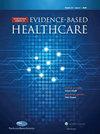论呈现证据和开箱科学
Q3 Medicine
International Journal of Evidence-Based Healthcare
Pub Date : 2019-06-04
DOI:10.17267/2675-021XEVIDENCE.V1I1.2362
引用次数: 1
摘要
当我们聚集在一起讨论推出《证据》(Evidence)杂志的可能性时,我们面临的第一个问题是,在一个竞争激烈的环境中,我们为什么(以及是否)需要另一份医学杂志,因为这样的杂志已经很多了。道格拉斯·奥特曼(Douglas Altman)在他1994年的著名文章《拙劣医学研究的丑闻》中指出,我们需要“更少的研究,更好的研究,为了正确的理由而进行的研究”。除此之外,由于不精确(样本量小)、方法偏差(研究设计质量低)和忠诚偏差(以最符合研究者或研究人员的观点和偏好的方式制定结论),研究的预测价值一般可能低于50%2,更不用说P-hacking3、隐瞒数据集和发表偏差(即只发表或大部分发表反驳原假设的论文)。本文章由计算机程序翻译,如有差异,请以英文原文为准。
On presenting Evidence and unboxing science
The first question we faced as we gathered to discuss the possibility of launching Evidence (then just called the new journal on evidencebased medicine, still no caps) was why (and if) we did need another medical journal in a highly competitive environment already full of those. Douglas Altman stated that we needed “less research, better research and research done for the right reasons” in his famous 1994 article “The Scandal of Poor Medical Research”1. Adding to that, the predictive value of research in general probably lies below 50%2, due to imprecision (low sample size), methodological bias (low quality of research design) and allegiance bias (conclusions being crafted in a manner that reconciles best with the investigator’s or researcher’s perspectives and preferences), not to mention P-hacking3, withholding datasets and publication bias, that is, publishing only or mostly papers that disprove the null hypothesis.
求助全文
通过发布文献求助,成功后即可免费获取论文全文。
去求助
来源期刊

International Journal of Evidence-Based Healthcare
Medicine-Health Policy
CiteScore
1.80
自引率
0.00%
发文量
39
期刊介绍:
The International Journal of Evidence-Based Healthcare is the official journal of the Joanna Briggs Institute. It is a fully refereed journal that publishes manuscripts relating to evidence-based medicine and evidence-based practice. It publishes papers containing reliable evidence to assist health professionals in their evaluation and decision-making, and to inform health professionals, students and researchers of outcomes, debates and developments in evidence-based medicine and healthcare.
The journal provides a unique home for publication of systematic reviews (quantitative, qualitative, mixed methods, economic, scoping and prevalence) and implementation projects including the synthesis, transfer and utilisation of evidence in clinical practice. Original scholarly work relating to the synthesis (translation science), transfer (distribution) and utilization (implementation science and evaluation) of evidence to inform multidisciplinary healthcare practice is considered for publication. The journal also publishes original scholarly commentary pieces relating to the generation and synthesis of evidence for practice and quality improvement, the use and evaluation of evidence in practice, and the process of conducting systematic reviews (methodology) which covers quantitative, qualitative, mixed methods, economic, scoping and prevalence methods. In addition, the journal’s content includes implementation projects including the transfer and utilisation of evidence in clinical practice as well as providing a forum for the debate of issues surrounding evidence-based healthcare.
 求助内容:
求助内容: 应助结果提醒方式:
应助结果提醒方式:


